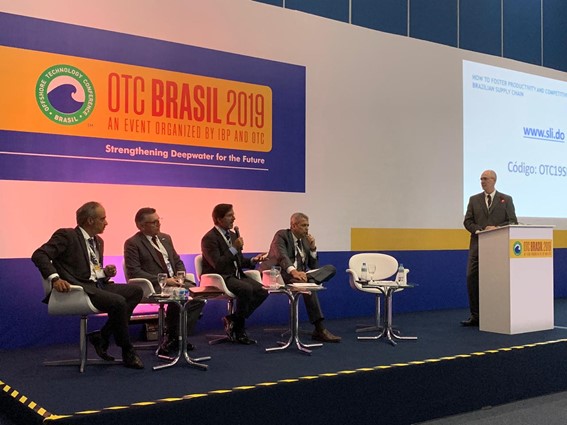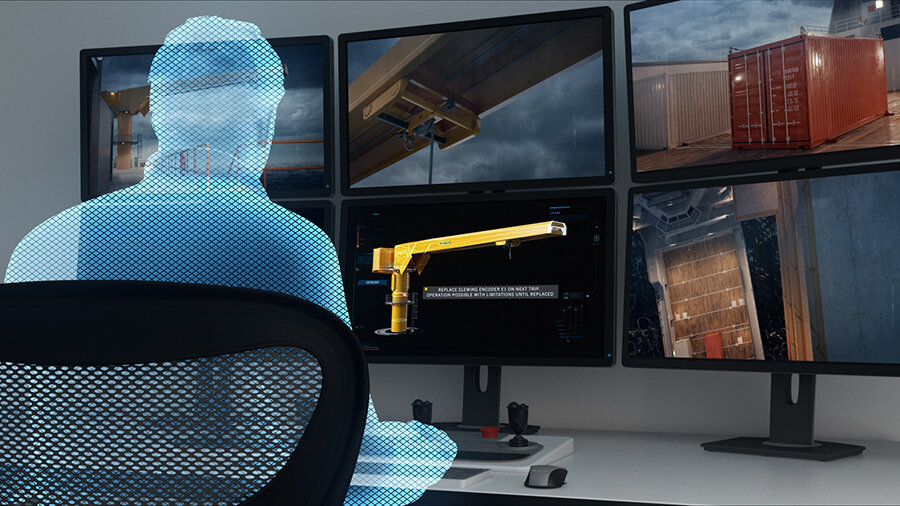Last Updated on March 30, 2022 by PALFINGER
PALFINGER operates in multiple maritime segments – each a complex field of its own with very individual needs. To meet these, we draw on a pool of knowledge specific to segment, world region, and technology. What moves our customers in their area of expertise? What are their challenges? What are their goals? The key to our success is knowing the answers to these questions.
Our new Marine Meetup series explores just that. We dug into our global network of stakeholders PALFINGER works with every day. In due course, a number of reputable voices will demonstrate how versatile our business really is by answering five questions pertaining to their respective field of expertise.
We are happy and honored to have Eberaldo de Almeida Neto kick off the series. He used to be a main executive of the multinational corporation Petrobras, which, to this day, counts among PALFINGER’s major customers in the oil and gas sector. In the interview, the president of the Instituto Brasileiro de Petróleo e Gás (IBP) talks about his experience in and impact on the oil and gas industry. For the future, he has clear objectives in mind to harness the sector’s potential while equally acknowledging the challenges ahead. Furthermore, Eberaldo highlights the importance of excellent partnership between oil companies and equipment suppliers.
Eberaldo, what’s your specific role in the oil and gas exploration and production industry and where do you see the greatest potential for future discoveries?
Currently, I am the president of the Brazilian Oil & Gas Institute (IBP). IBP is the main representative entity of the oil and gas industry in Brazil. It combines technical activities such as generations of knowledge via technical committees, standardization, certification, and the promotion of events like Rio Oil & Gas and Rio Pipeline. Additionally, IBP advocates regulatory matters, aiming to improve the industry’s competitiveness.

Eberaldo de Almeida Neto at OTC Brasil 2019
Brazil has reported discoveries in many onshore and offshore basins, but the successful endeavors in the Campos and Santos basins have changed the country’s oil and gas history, placing it within the top ten producers worldwide.
The pre-salt discoveries in the Santos basin revealed giant fields that are now being developed by Petrobras and partners at a very impressive pace. The next hot spot is expected to be in the Brazilian equatorial margin, especially in deep water. There, several blocks are under exploratory studies in areas like Foz do Amazonas, Pará-Maranhão, Barreirinhas, and Potiguar. This region is near to the Guianas, where a successful exploratory plan has resulted in extraordinary discoveries since 2015.
What would you define as the greatest highlights and accomplishments in your career in the oil and gas industry?
I started my career almost 36 years ago. As I was reaching different levels of responsibilities, the deliverables increased in relevance. Dozens of innovations and achievements have occurred in several areas from when I joined Petrobras as an engineer to leaving the company 35 years after. The company’s recognition, in my view, was demonstrated by the fact I had taken almost all the managerial steps apart from president. As Head of Procurement for two years and Director for more than two years, I had the honor of contributing to making the company future-proof, more focused and agile. I had the opportunity to participate in one of the most incredible turnarounds of the industry at Petrobras.
However, I would like to cite some success cases of partnerships implemented with key providers that opened up new investments and growth capacity, especially for vessels and subsea equipment, bottlenecks that needed to be eliminated for increasing oil production at that time.
It was an ingenious plan that brought about a win-win situation, establishing one of the most significant supply chains for offshore E&P worldwide. This implementation was crucial to accelerating Pre-Salt production, providing significant improvement in the company’s cash flow, and contributing to its turnaround.
The IBP fosters research, development, and innovation (RD&I) to prepare the industry for the digital transformation. What major developments or milestones in technology and innovation within the industry have you witnessed so far, and what can we expect in the years to come?
Undoubtedly, the discoveries made in deep waters, especially on the pre-salt province, were a landmark for innovation in the Brazilian oil and gas industry. The main challenges in this frontier were the harsher geographic and geological conditions – due to longer distances from the coast and greater depth – and the higher pressure in the reservoirs.
As an example: while the Garoupa field was more than 10,000 ft deep in 1974, pre-salt reservoirs now reach depths of up to 23,000 ft. To overcome these challenges, Brazil’s oil and gas sector has been cooperating collectively with exploration and production (E & P) companies to develop new technologies in collaboration with the entire value chain and research and development (R & D) centers, including universities. The industry has established new standards in drilling and completion, in subsea systems, and in mooring systems for platforms.
The biggest challenge in the coming years will be the decarbonization of the energy matrix.
As oil and gas, mainly E & P, projects are capital-intensive – with associated economic, geological, technical, and environmental risks. Our industry has the potential to make a decisive contribution to the energy transition, either by reducing the carbon footprint of its operations or by adding cleaner energy sources to the portfolio. An effective decarbonization strategy for the energy sector relies on innovation and on the oil and gas sector’s investment and expertise.
As a global leader in marine solutions, PALFINGER strives to develop equipment that ensures safe and efficient offshore operations. How do you assess the role of suppliers like PALFINGER in terms of new technologies for the offshore oil and gas industry?
One of the most important aspects of the continuous improvement of oil and gas industry operations is the partnership among oil companies and suppliers. Suppliers like PALFINGER have played a critical role in the development of a safer, more sustainable, and more competitive industry.
Oil and gas has a strong and dynamic global value chain in which global suppliers are one of the main sources of cutting edge technologies that enable the industry to explore new frontiers and enhance the production in mature basins, ensuring competitive costs and operational safety with an eye on the future.
The oil and gas industry has embraced the challenge of playing a leading role in the energy transition to assure energy security. Oil companies will make an important contribution during the next decades, not least because of their enormous technological potential. In this context, key suppliers will be crucial to reaching the next energy sector phase.
|
With a new fully electric jib crane, PALFINGER responds to the stringent demands of the offshore oil and gas industry. Not only does this solution increase safety on offshore installations with its capability of being controlled remotely from an onshore control location, but it also reduces the carbon footprint. The crane’s power consumption is only 30 to 50 % compared to traditional offshore cranes. |
An important point on the IBP’s agenda is the new positioning of the oil and gas industry in view of the transition to a low-carbon economy. What measures are (going to be) taken to achieve this?
The oil and gas industry recognizes its role in providing energy security during the ongoing energy transition and as a key source of capital investment in renewables and technology. The Institute also endorses the reduction of the intensity of E & P Scope 1 and 2 emissions to a level compatible with the industry’s best global practices, improving energy efficiency and operational performance across the value chain.
For now, there is no emissions target for the oil and gas sector or specific areas such as the offshore market. Each company has sought its own way to internalize the challenges of the ongoing energy transition. IBP and its associate member companies understand the importance of a sectoral commitment. With this in mind, the institute is conducting a series of technical studies to better quantify the impacts and assess the opportunities and challenges for the Brazilian oil and gas sector in the coming years.
Five questions, five fascinating insights into the world of PALFINGER and our partners. We hope you enjoyed a glimpse into Eberaldo’s world. Stay tuned for our next expert interview of our all-new Marine Meetup series.

